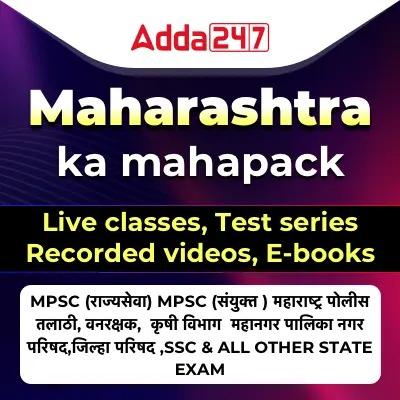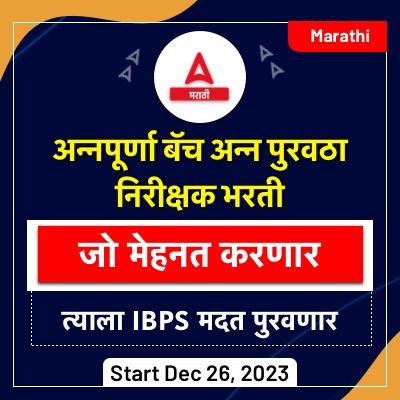Table of Contents
Direct and Indirect Speech
Direct and Indirect Speech : महाराष्ट्रातील तसेच राज्यातील बहुतेक स्पर्धा परीक्षेचा महत्वाचा विषय म्हणजे इंग्लिश. इंग्लिश विषयात जास्तकरून इंग्लिश ग्रामर वर प्रश्न विचारले जातात. नेहमीच्या सरावाने इंग्लिश विषयात चांगले गुण मिळू शकतात. आगामी काळातील भरती जसे की, आदिवासी विकास विभाग भरती आणि इतर स्पर्धा परीक्षांमध्ये इंग्लिश ग्रामरला विशेष महत्त्व आहे. इंग्लिश ग्रामर चे रोज वाचन फायदेशीर ठरते. इंग्लिश ग्रामर मधील एक महत्वपूर्ण घटक म्हणजे Direct and Indirect Speech. यावर परीक्षेत हमखास 1 ते 2 प्रश्न विचारले जाऊ शकतात. या लेखात आपण Direct and Indirect Speech व त्यातील महत्वाचे नियम यावर माहिती पाहणार आहोत.
Direct and Indirect Speech: विहंगावलोकन
इंग्रजी व्याकरणाचा अभ्यास करतांना Direct and Indirect Speech या घटकाचा अभ्यास करणे महत्वाचे ठरते. या लेखात Direct and Indirect Speech बद्दल सविस्तर माहिती दिली आहे.
| Direct and Indirect Speech : विहंगावलोकन | |
| श्रेणी | अभ्यास साहित्य |
| उपयोगिता | आदिवासी विकास विभाग भरती आणि इतर सर्व स्पर्धा परीक्षांसाठी उपयुक्त |
| विषय | इंग्रजी व्याकरण |
| लेखाचे नाव | Direct and Indirect Speech |
| लेखातील प्रमुख मुद्दे |
|
Direct and Indirect Speech examples: The concept of indirect and direct speech is one of the fundamental concepts in English Grammar. As language is used to convey our thoughts and feelings to others, the concept of speech becomes even more important from the language perspective. When you use direct speaking, you repeat exactly what someone has stated. To indicate where the speaker’s words begin and end, you use quotation marks. When you report what someone has said without using their exact words, you are utilizing indirect speaking. You do not use quotation marks, and you modify the speaker’s words to fit the grammar and punctuation of the sentence in which they are reported. Here we discussed some direct and indirect speech examples which are very useful for board exams and other one-day exams.
Direct and Indirect Speech Examples
Here are some direct and indirect speech examples are given below:
Direct Speech Examples:
- “I am going to the store,” said Sarah.
- “It’s a beautiful day,” exclaimed John.
- “Please turn off the lights,” Mom told me.
- “I will meet you at the library,” said Tom.
- “We are going to the beach tomorrow,” announced Mary.
Indirect Speech Examples:
- Sarah said that she was going to the store.
- John exclaimed that it was a beautiful day.
- Mom told me to please turn off the lights.
- Tom said that he would meet me at the library.
- Mary announced that they were going to the beach the next day.
Remember, when converting from direct to indirect speech:
- Change the pronouns to match the subject of the reporting clause.
- Adjust the tense of the reported verb (usually one step back in time).
- Modify time expressions (today -> that day, tomorrow -> the next day, etc.).
- Use reporting verbs such as “said,” “told,” “asked,” “exclaimed,” etc.
- If the sentence is a question, change it to a statement and use the appropriate reporting verb.
Indirect speech is used when reporting what someone else said without quoting their exact words. It is essential to pay attention to the changes in pronouns, tenses, and reporting verbs to convey the speaker’s original message accurately.
Direct and Indirect Speech Meaning
Since all sentences are constructed, spoken, and written using either direct or indirect speech, as was previously mentioned, this is significant.
When we need to repeat a remark or action of someone via written or verbal communication, we employ both direct and indirect speech. It is employed to provide a direct-indirect description of what someone stated. Before proceeding to the Direct and Indirect Speech Exercises and Examples
Direct Speech
Direct speech repeats or quotes what has been expressed or spoken. We may need to quote something spoken by a third person while speaking to another. Direct speech is used when a third party is directly cited. Inverted commas (” “) are used to write sentences in direct speech. The cited statement or sentence is written between the commas.
Indirect Speech
Indirect speech or reported speech is typically used to discuss the past, therefore we modify the tense of the words uttered into. We employ reporting verbs such as ‘tell,”say,’ and ‘ask,’ and the word ‘that’ can be used to introduce the reported in place of (” “) Direct and indirect speech introduces the concepts of’reported speech’ and’reported verb’.
Direct Speech Examples
Direct and Indirect Speech are the two types of speech that are used to explain with examples what other people say (or reported Speech).
Direct Speech: Direct speech is exactly what it sounds like: text that records a person’s exact words as they were spoken at the moment. In order for the reader to realise that the quoted text is the speaker’s own story, it is frequently surrounded by quotation marks.
some examples of direct speech:
- Statement: She said, “I will be there by 5 PM.”
- Question: He asked, “Have you finished the report?”
- Command: The coach shouted, “Run faster!”
- Exclamation: Mary exclaimed, “What a beautiful sunset!”
- Request: Tom said, “Please pass me the salt.”
- Response: John said, “Yes, I can help you with that.”
- Assertion: Sarah declared, “I’m confident that I can do this.”
- Expression of Emotion: Jane cried, “I’m so happy for you!”
- Confirmation: The teacher asked, “Is everyone ready for the test?”
- Offer: Mike said, “Would you like some more coffee?”
Indirect Speech Examples
Indirect Speech: The terms reported speech, indirect narration, and indirect speech are all used to describe indirect communication. Indirect speech is the term used in grammar to describe when you describe someone else’s statement in your own words without changing the statement’s meaning.
some examples of direct speech transformed into indirect speech:
- Direct Speech: She said, “I am going to the store.”
Indirect Speech: She said that she was going to the store. - Direct Speech: He said, “I will call you later.”
Indirect Speech: He said that he would call me later. - Direct Speech: They said, “We have finished our project.”
Indirect Speech: They said that they had finished their project. - Direct Speech: “It’s raining outside,” she said.
Indirect Speech: She said that it was raining outside. - Direct Speech: “I love this song,” he exclaimed.
Indirect Speech: He exclaimed that he loved that song. - Direct Speech: “Can you help me with my homework?” she asked.
Indirect Speech: She asked if I could help her with her homework. - Direct Speech: “We are going to the party,” they told us.
Indirect Speech: They told us that they were going to the party. - Direct Speech: “I won’t be able to attend the meeting,” he said.
Indirect Speech: He said that he wouldn’t be able to attend the meeting. - Direct Speech: “Please pass me the salt,” she requested.
Indirect Speech: She requested me to pass her the salt. - Direct Speech: “I didn’t see the movie,” he admitted.
Indirect Speech: He admitted that he hadn’t seen the movie. - Direct Speech: “The concert starts at 7 PM,” they informed us.
Indirect Speech: They informed us that the concert started at 7 PM. - Direct Speech: “I have been working on this project,” she explained.
Indirect Speech: She explained that she had been working on that project. - Direct Speech: “Don’t touch that,” he warned.
Indirect Speech: He warned not to touch that. - Direct Speech: “I’ll meet you at the cafe,” she promised.
Indirect Speech: She promised to meet me at the cafe. - Direct Speech: “We can solve this problem,” they assured us.
Indirect Speech: They assured us that they could solve that problem.
Indirect speech is commonly used in writing, conversations, and storytelling to report what someone else has said in a more contextual and flowing manner.
Direct and Indirect Speech Examples
- Direct: She said, “I am going to the store.”
Indirect: She said that she was going to the store. - Direct: He asked, “Have you completed your homework?”
Indirect: He asked if I had completed my homework. - Direct: They exclaimed, “We won the match!”
Indirect: They exclaimed with joy that they had won the match. - Direct: The teacher said, “The exam will be on Friday.”
Indirect: The teacher announced that the exam would be on Friday. - Direct: She whispered, “I have a secret.”
Indirect: She whispered that she had a secret. - Direct: He complained, “I haven’t had any coffee today.”
Indirect: He complained that he hadn’t had any coffee that day. - Direct: The child asked, “Can I have some ice cream?”
Indirect: The child asked if he could have some ice cream. - Direct: She said, “I don’t like spinach.”
Indirect: She said that she didn’t like spinach. - Direct: He warned, “Be careful with that glass!”
Indirect: He warned me to be careful with that glass. - Direct: The manager announced, “The meeting is postponed.”
Indirect: The manager announced that the meeting was postponed.
Change into Indirect Speech Answer
we can easily change into indirect speech answer examples are given below.
Direct speech – Reporting the message of the Speaker in the exact words as spoken by him.
Direct speech example: Suman said ‘I am busy now’.
Indirect speech: Reporting the message of the Speaker in our own words
Indirect speech example: Suman said that she was busy then.
Direct and Indirect Speech Examples Rules
Below we have mentioned some rules for converting direct speech into indirect speech. These rules will help students in mastering this topic.
Rule 1: All present tenses in indirect speech are converted to the matching past tense when the reporting verb in direct speech is in the past tense
For example, Direct: She said, ‘I am sad’.
Indirect: She said that she was happy
Rule 2: The tenses of the direct speech are not changed if the words used are within double quotes (“”) or the reporting verb is in the present or future tense
Direct: He said, ” Humans are social animals”
Indirect: He said that Humans are social animals.
Direct: He says/will say, ‘I am running’
Indirect: He says/will say he is running
Rule 3: Past Tense and Future Tense Conversion
The past tense and future tense will change in the following tense in indirect speech.
- Simple past changes to Past Perfect
- Past Continuous Changes to Past Perfect Continuous
- Simple Future Changes to Present Conditional
- Future Continuous to Conditional Continuous
Rule 4: Interrogative sentences starting with Wh questions do not require a joining clause (conjunction) while converting into indirect speech. They act as a joining clause. Said/Said to changes into demanded, inquired, or asked
Direct: The boy asked, “Where do you live?”
Indirect: The boy inquired where I lived
Rule 5: Interrogative sentences starting with a helping verb or auxiliary verb, while converting them into indirect speech, joining clause “if” or “whether” is used.
Direct: She said, ‘Will you go home?’
Indirect: She asked whether we would go home.
Direct and Indirect Speech Examples:
Understanding Direct and Indirect Speech with Examples is the most significant component of English Grammar since direct and indirect speech construct questions in many competitive exams.
Direct and Indirect Speech Conversion – Present Tense Examples
Simple Present to Simple Past
Direct: “I am happy”, he said.
Indirect: He said that he was happy.
Present Continuous to Past Continuous
Direct: “I am playing football”, she said.
Indirect: She said that she was playing football.
Present Perfect to Past Perfect
Direct: He said, “she has completed her work”.
Indirect: He said that she had completed her work.
Present Perfect Continuous to Past Perfect Continuous
Direct: “I have been to San Francisco”, She told me.
Indirect: She told me that she had been to San Francisco.
Direct and Indirect speech conversion – Past Tense Examples
Simple Past to Past Perfect
Direct: “I did the work”, he said.
Indirect: He said that he had done the work.
Past Continuous to Past Perfect Continuous
Direct: “I was reading a novel”, she said.
Indirect: She said that she had been reading a novel.
Direct and Indirect Speech Conversion – Interrogative Sentences Examples
Direct: “Where do you stay?” asked the boy.
Indirect: The boy enquired where I stayed.
Note: While changing the interrogative sentence into indirect speech remove the question mark ‘?’.
Direct: She said, “Will you come to the party?”
Indirect: She asked whether I would come to the party.
Note: While changing the interrogative sentence reporting verbs (verbs used in the first part) such as ‘said/ said to’ changes to enquired, asked, or demanded.
Direct and Indirect Speech Conversion- Modals Examples
- Can becomes Could
- May changes to Might
- Must change to had to /Would have to
- Will changes would
- Direct: She said, “Her sister can dance.”
- Indirect: She said that her sister could dance.
- Direct: They said, “We may go to the party.”
- Indirect: They said that they might buy a dress.
- Direct: Rahul said, “I must complete the work on time.”
- Indirect: Rahul said that he had to complete the work on time.
Note: Could, Would, Should, Might, and Ought to modal verbs do not change.
Direct and Indirect Speech Conversion- Pronoun Examples
The first person in the direct speech changes as per the subject of the sentence.
Direct: My brother said, “I am in class Twelfth.”
Indirect: My brother said that he was in class Twelfth.
The second person of direct speech changes as per the object of reporting speech.
Direct: She says to her students, “You have done your work.”
Indirect: She tells them that they have done their work.
The third person of direct speech doesn’t change.
Direct: My friend says, “She dances well.”
Indirect: My friend says that she dances well.
महाराष्ट्रातील सर्व स्पर्धा परीक्षांसाठी ऑनलाईन क्लास, व्हिडिओ कोर्स, टेस्ट सिरीज, पुस्तके आणि इतर अभ्यास साहित्य खाली दिलेल्या लिंक वर क्लिक करून मिळावा.
अड्डा 247 मराठी अँप | अड्डा 247 मराठी टेलिग्राम ग्रुप









